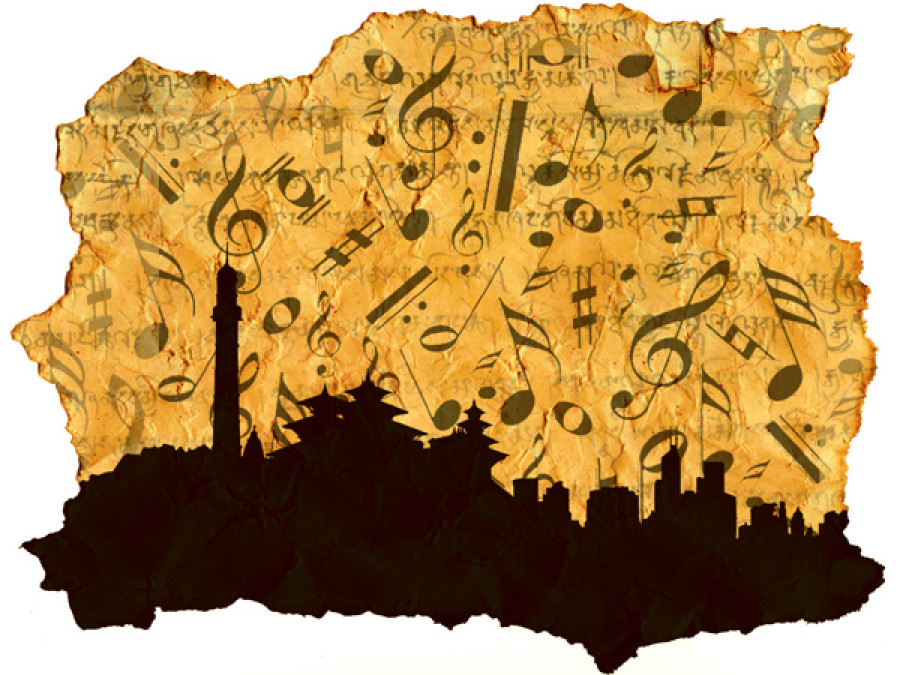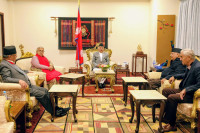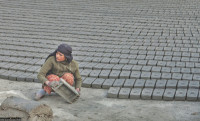Opinion
Past glories
Nepali heritage monuments are a blend of various styles introduced by artisans at different periods of history
Hari Shrestha
The beauty of any nation lies in the richness of its tangible and intangible cultural heritage. Together, they not only give a spectacular identity of a nation but also make for an astounding spectacle of the overall psyche and sentiments of society. Various living monuments of archaeological importance and works of art are surely the greatest treasure of the human civilisation. They beautifully unveil the secrets of human achievements and glorify the history, culture and identity of a community and a nation.
Rare antiquities and monuments of outstanding value are slowly disappearing from the world on account of human negligence, lack of knowledge and natural decay and disaster. The April and May mega earthquakes in Nepal not only caused a heavy loss of lives and property but also damaged many sacred temples and monuments that had evolved as the spiritual power center for the biopsychic drive of the community as well. The loss of heritage structures increases the chances of losing the architectural history of the particular monuments and many intangible cultures associated with them. They need to be properly conserved and protected so that they last longer to provide economic gains and satisfy academic and intellectual curiosity.
As someone who was involved in collecting and compiling all the available records on the architectural and cultural history of heritage structures affected by the great earthquake, this scribe encountered many interesting facts about the root of heritage structures in Kathmandu Valley.
Evolution of Nepali architecture
The Kathmandu Valley, often referred to as the Nepal Valley, represents one of the most magnificent urban civilisations in the world. It has sheltered the dominating power of the central part of the Himalayas over the past 2,000 years. The Valley occupies a prominent position as a repository of ancient Nepali art, architecture and culture. The early history of the Nepal Valley begins with the activities of the Neolithic Naag people and thee Valley was then called Nagbas/Nagrhad, the abode of Naags. The Gopals and Mahispals, the proto-historic pastoral communities, are believed to be the early ruling dynasties of Nepal and also credited with the discovery of Pashupati, a Shiva-linga at a spot they were led to by a cow. However, it is difficult to trace the signs of the early settlements and the nature of the earliest phase of Nepali architecture.
Since the time of the Kirats, distinct changes took place in the field of architectural development in the Valley. S. R. Tiwari in his scholarly book entitled ‘Temples of the Nepal Valley’ argues that the Kirats first introduced the numinous stone structure called digvara in their own terminology which was later converted into devakula by the Licchavi. The digvara was a stone temple enshrined with a family god erected near the pringga, a typical Kirat settlement. The use of brick and wood in architectural construction as introduced by the Kirats further flourished with the passage of time and finally culminated in the classical Malla architecture.
With the arrival of the Shakyas, the building culture of Kathmandu Valley got another distinctive character as they were a society of specialised builders who first introduced the tamralep technique of polishing stones. Ananda Coomaraswamy opines that the root of early ‘Indian architecture’ was the contribution of the Shakyas. This holds true for Nepal too.
The Licchavi period is known for its architectural and sculptural achievements. Scattered stone inscriptions, vamsavalis and the accounts written by Chinese travelers beginning in the 7th century AD provide brief references to a palace of great magnificence; no trace of these buildings remains today. But the references to them in contemporary inscriptions and in Chinese sources leave no doubt about their existence. The multi-roofed pagoda temples are indigenous to Nepal and they originated in the Nepal Valley during the Licchavi period. The votive caityas and monasteries which were built during the Licchavi period became a prototype for the caityas and monasteries of Tibet, China, Burma, Siam, and even Ceylon.
Further development
Nepali architecture became so famous that a Nepali mission of artists led by Araniko was invited to visit Tibet and China by Emperor Kublai Khan in 1246 AD. For his contribution to the art and architecture of China and Tibet and his creation of splendid religious shrines and magnificent sculptures, Araniko received the highest honour there.
In the early medieval centuries, the urban landscape of Kathmandu Valley completely changed with the massive construction of magnificent temples, viharas, stupas and palaces. This attracted a large number of people for trade and fairs, which greatly speeded the process of urbanisation in the region.
The Malla rulers of later medieval period patronised art and architecture with the same zeal and devotion that characterised the activities of their predecessors. It was in this period that Kathmandu Valley became an epicenter of Nepali art and architecture with the introduction of Nepali schools—a place of respect and renown in the history of Asian art. Percy Brown rightly stated that the temples and buildings introduced by the Newars of Nepal Valley reveal such a wealth of fine and applied art that may claim to have critically developed a distinctive art of its own, in other words, a Nepali school of art.
Nepali heritage monuments are thus a happy blend of different styles introduced by the creative genius of Nepali artists and artisans at different periods of history. We as the trustees of this heritage have the responsibility to conserve and preserve these invaluable monuments and ensure the continuity of our distinct cultural identity.
Shrestha is former associate professor of archaeology at Tribhuvan University




 8.12°C Kathmandu
8.12°C Kathmandu










